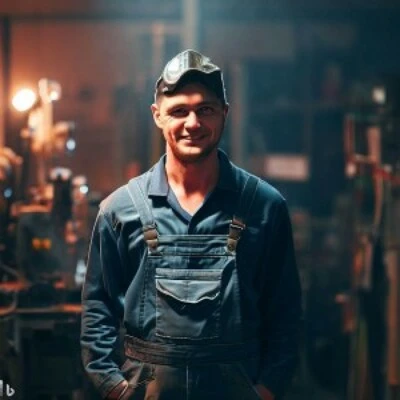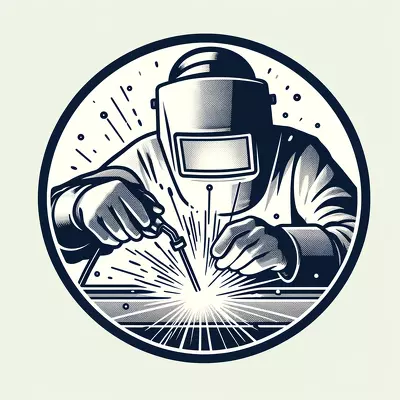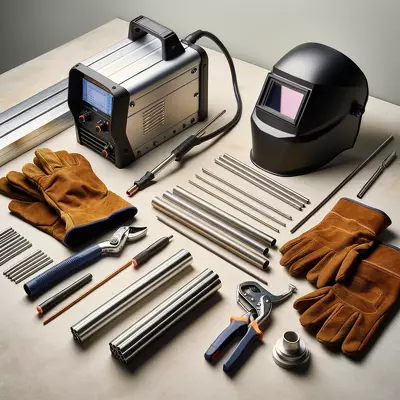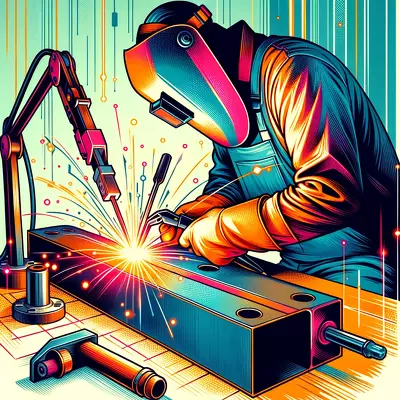Tracing the Origins: Discovering When Welding Was Invented and Its Evolution Over Time
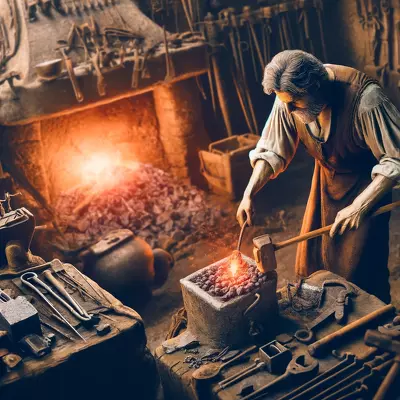
Welding, a process essential to construction and manufacturing, has a fascinating history. It dates back to ancient times when Egyptians and people in the Middle East used basic forms of welding over 2,000 years ago. However, modern welding techniques were developed in the 19th century. This transformation was crucial for industrial growth, allowing stronger, more durable constructions. Today, welding remains vital across many industries worldwide.
I. Introduction
A. Brief Overview of Welding
Welding is a process that involves joining metals by heating them to the point of melting and then allowing them to cool, forming a solid bond. This technique has been crucial for the development of numerous industries, including construction, automotive, and manufacturing.
B. Importance of Welding in Modern Industry
Welding is indispensable in modern industry. It enables the creation of complex structures and machinery, ensuring durability and strength. With welding, many of the technological advancements seen today are possible.
C. Purpose of the Article
This article explores the history and evolution of welding, highlighting its significance and impact on various industries. Understanding the development of welding techniques provides insight into how this essential process has shaped the world.
II. Early Beginnings of Metal Joining
A. Ancient Techniques
Metal joining dates back over 2,000 years. Ancient civilizations, such as the Egyptians and Middle Eastern cultures, used basic welding techniques. These early methods involved hammering heated metal pieces together, laying the foundation for more advanced practices.
B. Medieval Advances
During the medieval period, blacksmiths refined metalworking techniques. They developed methods to forge and weld iron and steel, which were essential for creating tools, weapons, and armor. These advancements were critical for the period’s technological progress.
C. Early Modern Developments
The early modern era saw further progress in metal joining. Innovations in metallurgy and the discovery of new materials facilitated more sophisticated welding techniques, setting the stage for the invention of modern welding methods.
III. The Invention of Modern Welding
A. Late 19th Century Innovations
The late 19th century marked a significant turning point for welding. Nikolai Slavyanov and C.L. Coffin revolutionized the field by developing electric arc welding, which involved using an electric arc to melt and join metals, offering greater precision and strength.
B. Key Figures in Welding History
Pioneers like Sir Humphry Davy and Elihu Thomson played crucial roles in the advancement of welding. Their contributions to the understanding of electricity and metallurgy were instrumental in developing effective welding processes.
C. First Practical Welding Methods
The first practical welding methods emerged during this period, including resistance welding and oxy-fuel welding. These techniques allowed for stronger joints and more efficient production processes, paving the way for widespread industrial use.
IV. Evolution of Welding Techniques
A. Early 20th Century Developments
The early 20th century saw rapid advancements in welding technology. Gas welding and cutting techniques became more prevalent, driven by the needs of World War I. These methods provided greater control and flexibility in metalworking.
B. Introduction of Electric Arc Welding
Electric arc welding gained popularity in the 1920s and 1930s. It offered significant advantages in speed and strength, making it the preferred method for many industrial applications. This technique remains a cornerstone of modern welding practices.
C. Advancements in Gas Welding
Gas welding also evolved during this time, with improvements in torch design and gas mixtures. These advancements enhanced the precision and efficiency of welding processes, contributing to the growth of various industries.
V. Impact of Welding on Industry
A. Construction and Infrastructure
Welding has had a profound impact on construction and infrastructure. It enables the creation of sturdy buildings, bridges, and pipelines, ensuring safety and longevity. Modern skyscrapers and infrastructure projects rely heavily on advanced welding techniques.
B. Automotive and Aerospace Industries
Welding innovations have greatly benefited the automotive and aerospace industries. In these sectors, welding ensures the integrity and performance of critical components, from car frames to aircraft fuselages. The precision and strength of welded joints are essential for safety and reliability.
C. Shipbuilding and Manufacturing
Shipbuilding and manufacturing also rely on welding to create robust and durable structures. Welding allows for the construction of large ships and industrial machinery, playing a vital role in global trade and production.
VI. Modern Welding Technologies
A. Laser Welding
Laser welding is a cutting-edge technology that uses concentrated laser beams to join metals. This method offers unparalleled precision and is used in industries requiring high accuracy, such as electronics and medical device manufacturing.
B. Robotic Welding
Robotic welding involves using automated systems to perform welding tasks. This technology enhances efficiency, consistency, and safety in industrial settings. Robots can work continuously without fatigue, ensuring high-quality welds.
C. Advanced Welding Materials
Advancements in welding materials, such as high-strength alloys and composites, have expanded the possibilities of welding. These materials allow for the creation of lighter, stronger, and more durable structures, driving innovation in various fields.
VII. The Future of Welding
A. Emerging Trends
Emerging trends in welding include the integration of artificial intelligence and machine learning. These technologies enable smarter welding systems that can adapt to different conditions and improve accuracy and efficiency.
B. Sustainable Welding Practices
Sustainable welding practices are becoming increasingly important. Efforts to reduce energy consumption and emissions are shaping the future of welding. Techniques such as friction stir welding and green welding materials contribute to more eco-friendly practices.
C. Innovations on the Horizon
Future innovations in welding include advancements in nanotechnology and additive manufacturing. These breakthroughs have the potential to revolutionize how metals are joined, opening new possibilities for design and construction.
VIII. FAQs
Q: When was welding invented?
A: Welding dates back over 2,000 years, with modern techniques developed in the late 19th century.
Q: Who invented electric arc welding?
A: Nikolai Slavyanov and C.L. Coffin are credited with developing electric arc welding in the late 19th century.
Q: What industries rely heavily on welding?
A: Construction, automotive, aerospace, shipbuilding, and manufacturing industries rely heavily on welding.
Q: What is laser welding?
A: Laser welding uses concentrated laser beams to join metals, offering high precision for industries like electronics and medical devices.
Q: How has robotic welding impacted the industry?
A: Robotic welding has improved efficiency, consistency, and safety in industrial welding processes.
Q: What are sustainable welding practices?
A: Sustainable welding practices aim to reduce energy consumption and emissions, using techniques like friction stir welding and eco-friendly materials.
Q: What are some future trends in welding?
A: Future trends in welding include the use of AI, machine learning, nanotechnology, and additive manufacturing.
IX. Conclusion
A. Summary of Welding’s Evolution
Welding has evolved from ancient techniques to modern methods, transforming industries worldwide. Innovations over the centuries have led to the sophisticated processes used today.
B. Significance of Welding in Today’s World
Welding remains crucial in construction, manufacturing, and technology. Its ability to create strong, durable joints is vital for the development and maintenance of modern infrastructure and products.
C. Final Thoughts on the Future of Welding
The future of welding promises exciting advancements. Emerging technologies and sustainable practices will continue to shape the industry, driving progress and innovation.
X. Suggested Readings
Welding enthusiasts and professionals can deepen their knowledge by exploring these insightful books:
- “Welding: Principles and Applications” by Larry Jeffus – A comprehensive guide to welding techniques and applications, ideal for students and professionals.
- “Modern Welding Technology” by Howard B. Cary and Scott Helzer – An in-depth look at contemporary welding methods and their industrial applications.
- “Welding for Dummies” by Steven Robert Farnsworth – A beginner-friendly introduction to welding, covering basic concepts and techniques.
- “Welding Metallurgy” by Sindo Kou – Explores the metallurgical aspects of welding, which is essential for understanding the properties and behavior of welded materials.
- “The Welding Business Owner’s Handbooks” by David Zielinski – A practical guide for running a successful welding business, covering management, marketing, and financial strategies.
These books offer valuable insights into the history, techniques, and future of welding. They cater to different levels of expertise, from beginners to seasoned professionals, providing a broad understanding of this essential field.

